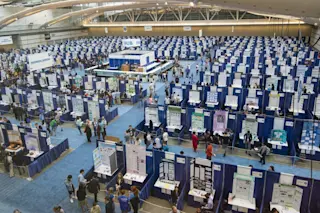When I was 16, I participated in the Montgomery County, Maryland science fair. My entry was–as I recognized even at the time–a fairly middling effort, more a research project than an original experiment. I was not surprised when I walked away with an appropriately middling “honorable mention” in my category. It was an inspiring experience anyway, for reasons that are perceptively captured in the marvelous new documentary Science Fair.
The culture of the science fair is one of profound optimism, marked by a sense of common purpose more than a sense of competition. I was certainly a little jealous of the more ambitious projects I saw all around me, but mostly I was awed by the brainpower on display, the vast range of problems that kids my age were trying to solve (or at least to understand a little better). Science Fair, the movie, fully embraces these themes as it ...














